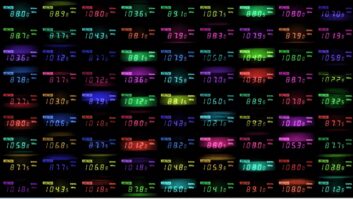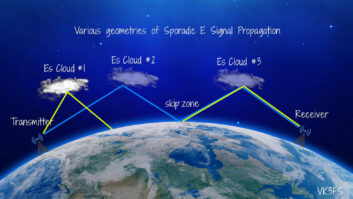The author is a consultant and is the retired senior VP of engineering at CBS Radio. He responds to the commentary “Let’s Talk About Mono,” in which David Bialik laid out an argument for FM talk stations to broadcast in mono rather than stereo. (Also read a related commentary by Gary Keener.)
I don’t wish to enter into a disagreement with my good friend David Bialik, but there is an argument that modern car radio algorithms essentially eliminate the disadvantages of stereo FM transmissions.
In order to understand how stereo operation impacts the reception of FM, we need to look at the technology behind FM stereo transmission and reception.
The FM stereo transmission system transmits the monoaural signal, L+R in the spectrum between the carrier frequency and 15 kHz, the stereo pilot at 19 kHz, and the stereo information L–R between 23 kHz and 53 kHz. The audio is low-pass filtered to prevent the monaural audio from interfering with the 19 kHz pilot. The L–R signal is transmitted with a double sideband signal centered about a suppressed 38 kHz subcarrier as can be seen in Fig. 1.

Inherent in the FM reception is the mathematical mechanism that causes the noise floor to increase exponentially as the information departs from the carrier frequency. The figure of 10 dB is generally cited as the noise induced by the stereo subcarrier, under fixed conditions. That is why the SNR of a stereo transmission is generally less than 50 dB except in locations close transmitter.
The receiver process, in Fig. 2, shows the FM composite (L+R), (L–R), and the 19 kHz pilot being split into three signal paths: (1) a low-pass filter for the L+R, (2) a bandpass filter for the L–R, and (3) a second bandpass filter to isolate the 19 kHz pilot.

The L–R signal, a double sideband suppressed carrier transmission, needs its carrier reinserted to recover the audio without distortion. Following the 19 kHz pilot filter is a frequency multiplier that doubles the pilot frequency to 38 kHz for insertion into the synchronous demodulator. Following the synchronous detector, the demodulated L–R signal feeds one input to a matrix with the second input being fed by the L+R signal. The math shows (L+R) + (L–R) on the upper output terminal leaving 2 L and the lower output terminal being (L+R) – (L–R) yielding 2R or the right channel.
Car radios since the middle 1980s had an additional block, a continuously variable subcarrier insertion level that varies, in real time, the injection from the synchronous detector to the matrix. Additionally, there were variable high-frequency (lowpass) filters on the L and R outputs to mask the noise. When the receiver detected the presence of noise and/or multipath, the level of L–R audio injected into the matrix was reduced. The blend to monoaural circuitry essentially eliminated the disadvantage of stereo by reducing the level L–R channel injection at a rate commensurate with fading. By the time the radio transitioned near or beyond the 60 dBu contour, radios were generally in full monoaural with the high frequencies rolled off to about 8 kHz.
At stronger signal levels i.e., greater than 60 dBu, these radios experienced “breathing” between full stereo and degrees of mono while the high-frequency response was simultaneously changing in response to noise and multipath. Those in the receiver industry viewed these artifacts as acceptable, whereas broadcast personnel had a different opinion.
[Read More Guest Commentaries Here]
Today’s modern DSP radios are referred to as software-defined radios or SDRs. In these radios, the only analog components are the RF amplifier, the mixer and the audio amplifier. The mixer stage is followed by an analog-to-digital converter, AD, where the signal is transformed into the digital domain for further processing. The digitization of the signal provides (1) better adjacent channel interference rejection (the digital FFT IF filters can be adjusted in real-time to address adjacent channel interference), (2) better demodulation algorithms with lower distortion than analog implementations, and (3) digital noise reduction that just wasn’t possible with analog designs. With a digitally processed signal, it is possible to manipulate the multipath in ways that produce a more listenable signal that is free of the artifacts that were associated with an analog blend to monaural circuitry.
While developing the HD Radio system, I had the opportunity to study the GM, Ford and similar radios of the day. I had the chance to observe the benefits and disadvantages of the blend to monoaural with high-cut circuitry.
With those radios, the observed differences between monaural and stereo transmissions were more in the lack of blending artifacts than the elimination of noise. I have not personally field-tested the current generation of SDR radios with mono and stereo transmissions. I have discussed these designs with those who have had the experience and believe with a DSP-based radio it is more difficult to hear the differences between monaural and stereo transmissions. When you broadcast in monaural, the sponsor would not have its spots, produced in stereo, delivered in stereo, and the audience would miss the ambiance of the actualities or natural sound, jingles and music in its original stereo format.
Your streaming and radio competitors are delivering stereo to their audiences.
Comment on this or any story. Email [email protected] with “Letter to the Editor” in the subject field.







